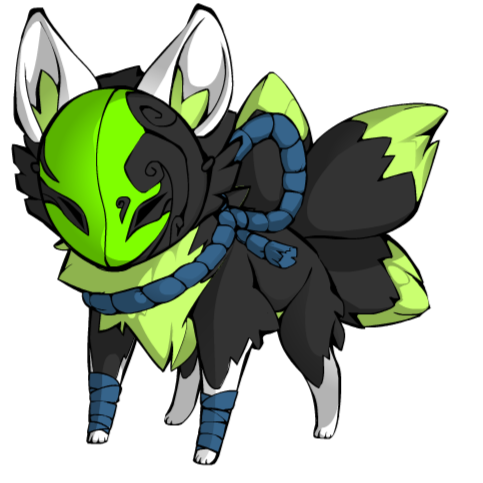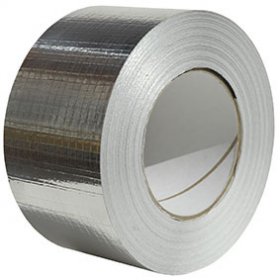Easier way is to remember that the ISO model is defunked and you should use the TCP/IP model.
IP is layer 3 and TCP is layer 4.
Please elaborate your nonsensical comment.
ISO is a theoretical model on how things work, suitable for teaching and for reference. In reality, there are only 4 layers and not the finely chiseled concern-separating layers at the bottom.
ISO is an organization. OSI is a model.
Edit: there are also definitely more than four “layers” (standard handoff points).
-
Physical involves the media and transmission format (e.g. EMF, waveform, etc)
-
data link involves multiplexing and addressing on the local segment
-
Network involves beyond-segment addressing
-
Transport involves standard endpoint communication methods (tcp/udp)
Are you implying this is where everything ends?
What about application level multiplexing (sockets)?
I’m not implying anything.
-
The IP suite is not nearly as neatly layered as OSI was and the OSI model doesn’t neatly fit the IP suite since it wasn’t actually designed for IP at all. In the IP suite layers 5 and 6 basically don’t exist in the OSI sense, TCP handles things that are part of both layers 4 and 5 in the model despite being a single protocol, etc. The OSI model is often considered obselete as it just doesn’t actually fit the IP world all that well but it’s been around so long and does have uses in certain situations that it tends to stick around.
ISO/OSI is a neatly separated model mostly used on theory.
In practice, actual network stacks are often modeled after a simpler model that is called TCP/IP. Which despite the name is not actually TCP specific.
Here’s the general description and correspondence to ISO/OSI:
- Host to network / network access layer: it’s mostly the nic and nic driver. It’s sometimes numbered as 0 because some don’t consider it part of the TCP/IP stack, but simply the nic driver. Corresponds to:
- Physical
- Datalink
- Network layer: Corresponds to: 3. Network
- Transport layer: Corresponds to: 4. Transport
- Application layer: everything that’s part of the application and not the network stack. Corresponds to: 5. Session 6. Presentation 7. Application
Or, you can just not care about how the actual software stack is separated, and continue to use the most complete model, knowing that everyone will understand what you when you say “layer 2/3/4” anyway.
Plus, some could say that the TCP/IP model is equally unfit because the Linux network subsystem doesn’t care about layers.
Edit: I hope the formatting of that table isn’t broken on your client, because it is on mine
- Host to network / network access layer: it’s mostly the nic and nic driver. It’s sometimes numbered as 0 because some don’t consider it part of the TCP/IP stack, but simply the nic driver. Corresponds to:
IP is the internet layer which is layer 2 and TCP is the transport layer which is layer 3.
Why split physical and data link when they are so closely related? You can’t use vpi/vci on an ethernet port, you can’t use MAC addresses on a frame relay port. Bundle that shit together.
Presentation, application, and session are all dealt with by the application anyway so why bother splitting them out from a network point of view?
Why split physical and data link when they are so closely related?
100 mb Ethernet can be run over cat 5e, Cat 6, etc. You can even have Ethernet frames running over coax. (Not just the original standard which was coax but there are modern bridges for using cable TV coax in your house to reach rooms where you can’t pull cat5.)
Why split physical and data link when they are so closely related?
You can run Ethernet on any medium that has the capacity to transmit digital signals. It can be copper, optical, over-air laser, radio, on top of an analog carrier wave (ASK, FSK, PSK). The Ethernet traffic can be completely independent from the physical medium by using encapsulation (L2TP or any other protocol that encapsulates Layer-2). It can be pigeons carrying printouts of the Ethernet frames, scanned and reassembled at the destination. The same can be said about most Layer-2 protocols.
As long as the proper interfaces are present, the physical layer is completely transparent to the data link layer.
(edit) I should point out that Ethernet, specifically, transmits extra data before and after the frame (the preamble and inter-packet gap) that are used to configure the Rx circuit for reception, but the Layer-2 frame will be identical regardless of the medium.
Nobody responding to you understands that this is a joke, which kinda boggles the mind
What worries me more is that no one here, including myself, actually understands the concepts of the OSI model that is foundational knowledge.
TCP/IP is also the name of a model different from OSI. It has 4 layers instead of 7: https://www.hostwinds.com/blog/osi-vs-tcpip-differences-and-similarities
Yes, except if you are in my University, where professors are fossils and knowing OSI is required to pass the CN exam.
TCP/IP model is Limited and incomplete.
Fibrechannel, infiniband, and many RDMA protocols, just to make a few, don’t fit in the TCP/IP model, while the OSI model fits them just fine.
How don’t they fit?
Neither TCP, UDP, nor IP, is involved.
But they don’t run CLNS so the ISO model doesn’t fit either.
OSI model != OSI protocols
CLNS is not a pre-requisite for Layer 3.
OSI is much more important when you are doing wireless protocol design. TCP/IP is when you want to abstract out a lot of the lower layer functionality which is concerned with collision domains. It is definitely still taught in engineering school for a reason.
Accurate
Application: full of itself; just look at it; leaking out of its constraints.
Presentation: not happy; has to talk to the app.
Session: chillin; don’t start nothin, won’t be nothin.
Transport: ready for whatever comes its way.
Network: acting up as usual.
Data Link: Hidden but watching, well-behaved, compliant.
Physical: draping out of the rackInternet is cats, all the way down.
Please Do Not Throw Sausage Pizza Away !
My professor tried to teach us that one too, but a classmate came up with an unforgettable mnemonic. Very cursed
Mildly NSFW
Please Daddy, Not The Sex Pipe Again
The professor hadn’t heard that one before
Given that the internet is a series of tubes, it’s a better mnemonic since the pipe connection will help you remember it.
Ah yes, the EtherCAT.
All People Seem To Need Data Processing
But Few Purchase Software (Bits, Frames, Packets, Segments)
Please Do Not Throw Sausage Pizza Away
Well I was Gonna eat It so, No Worries.
People Don’t Need Their Stupid Packets Anyway
I have only ever know two devs that knew what the fuck OSI was. two out of at least one-hundred and fifty.
it’s nice to see a technical joke on here that’s more than just “hehe your language is bad”.
I think “technical” is a bit of a stretch… But who doesn’t like a good cat meme?
Please do not touch Sally’s pretty anus.
It’s missing layer 8 with a cat slowly and intentionally pushing the stack over while looking the IT cat directly in the eyes as it finally topples over. Then complains that nothing’s working but also not providing any helpful information.
I thought the easy way were “A Pussy So Tight No Dick Penetrates”?
Missing the latest addition to the OSI model: AI!
Layer 8 (sender): turning a few keywords into a well-formed text
Layer 8 (receiver): summarising text back into its short form
Believe it or not this made it harder
thank god I dropped out before going into the real nerd stuff











